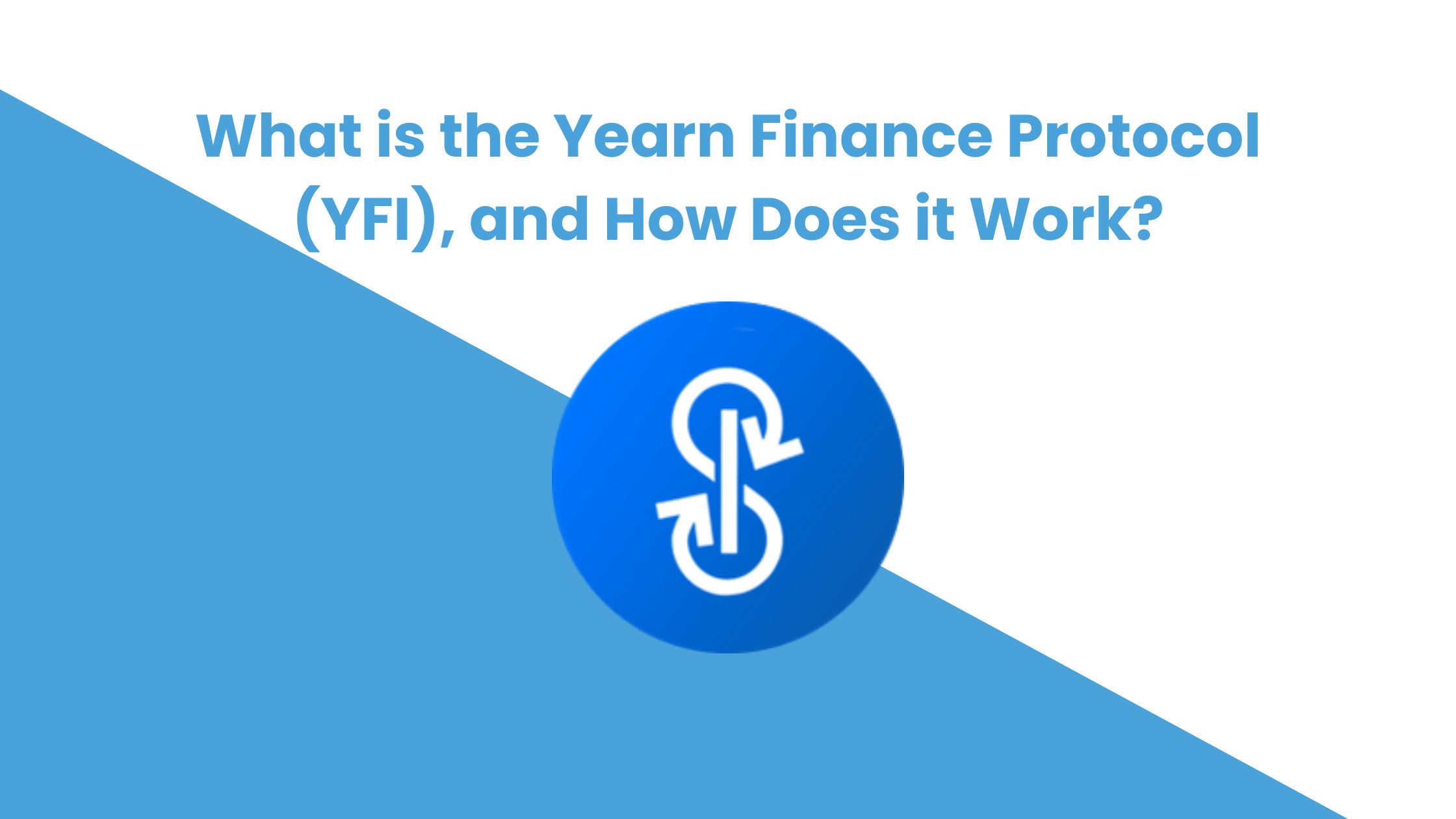
Hey, dear readers! ‘The Blockchainist’ welcomes you in the new blog post dedicated to Yearn Finance (YFI). As a well-informed crypto enthusiast, you might have surely heard of it.
Yearn Finance (YFI) is a decentralized finance (DeFi) protocol built on the Ethereum blockchain. This protocol offers a suite of services, such as yield generation, lending aggregation, and insurance. Andre Cronje created Yearn Finance. Shortly after, it was officially launched in July 2020 (when the COVID-19 pandemic took over the world). Yearn Finance saw the locked assets of $800 million in its first month after launch.
Eventually, this made the Yearn Finance protocol one of the fastest-growing DeFi projects to date. The main reason behind the massive success of the Yearn Finance protocol is its functioning model, which allows crypto users to access simplified DeFi activities and investments.
Moreover, the protocol charges a reasonable withdrawal fee (0.5%). This makes the Yearn Finance protocol quite popular among crypto enthusiasts. Also, its native token, YFI, plays a crucial role in governance and incentivization within the ecosystem.
In today’s blog post, we’ll comprehensively understand the Yearn Finance protocol and its workings. We’ll also delve into the information related to its popular ERC-20 crypto token (known as YFI).
So, without further ado, jump straight into our blog post.
Let’s first look at the core components of this renowned DeFi protocol.
Core Components of Yearn Finance
1. Vaults
Vaults are one of the primary features of Yearn Finance. They are smart contracts that pool user funds and employ complex strategies to generate the highest possible yield. Here’s how they work:
- Deposit and Strategy Selection: Users deposit their assets into a vault, which then automatically allocates these assets to different yield-generating opportunities. Strategies are chosen based on factors such as potential returns, risk, and liquidity.
- Yield Optimization: Vaults utilize various DeFi protocols such as Compound, Aave, and Uniswap to generate yields. The system continuously monitors and optimizes these strategies to ensure maximum returns.
- Fees: Vaults charge performance fees on the profits generated, which are typically shared between the Yearn team and the vault depositors. A portion of the fees is used to maintain and develop the platform.
2. YFI Token
The YFI token is the governance token of the Yearn Finance ecosystem. Unlike many other tokens, YFI does not have a pre-mine or initial allocation. It was distributed to the community through a liquidity mining program. Here’s how it functions:
- Governance: YFI holders have voting rights on protocol upgrades, changes, and governance proposals. Decisions are made through a decentralized voting process, ensuring that the community has a say in the platform’s future.
- Incentives: YFI tokens are also used to incentivize participation in the ecosystem. Users who provide liquidity or participate in governance receive YFI as rewards.
3. Strategies
Strategies are algorithmic plans implemented within the vaults to maximize yield. They are continually updated and optimized by the Yearn Finance community and developers. Key aspects include:
- Automated Rebalancing: Strategies automatically adjust asset allocations based on market conditions and yield opportunities. This ensures that the vaults are always utilizing the best available strategies.
- Complex Mechanisms: Some strategies involve complex financial mechanisms such as leverage or arbitrage to enhance returns. The effectiveness of these strategies is continually tested and refined.
How Yearn Finance Works
Step #1: User Interaction
To use Yearn Finance protocol, users need to interact with the platform through the Yearn website or compatible decentralized applications (dApps). The process typically involves the following steps:
- Connecting a Wallet: Users connect their Ethereum wallet, such as MetaMask or Ledger, to the Yearn platform.
- Choosing a Vault: Users select a vault that aligns with their investment goals and deposit their assets. The vault then takes over the process of managing and optimizing these assets.
- Monitoring Performance: Users can track the performance of their investments through the Yearn dashboard. Performance metrics, including yield and fees, are displayed in real-time.
Step #2: Yield Farming and Liquidity Mining
Yearn Finance protocol incorporates yield farming and liquidity mining mechanisms to enhance returns. Here’s how they work:
- Yield Farming: Users provide liquidity to various DeFi protocols and earn rewards in the form of interest or additional tokens. Yearn’s vaults automate this process by shifting assets to the most profitable opportunities.
- Liquidity Mining: Users earn additional tokens by providing liquidity to decentralized exchanges or lending platforms. These tokens can be reinvested or held for potential future value.
Step #3: Governance and DAO
Yearn Finance protocol operates as a Decentralized Autonomous Organization (DAO). This structure allows YFI token holders to participate in governance decisions, such as protocol upgrades or changes in fee structures. The governance process involves:
- Proposals: Community members or developers can submit proposals for changes or improvements to the protocol.
- Voting: YFI holders vote on these proposals. Decisions are made based on the majority vote, ensuring that the community has control over the platform’s evolution.
Yearn Finance Ecosystem
The Yearn Finance ecosystem includes several interconnected components that contribute to its overall functionality. Key elements include:
yVaults
yVaults are specialized vaults designed for specific assets or strategies. They offer users targeted yield optimization based on their investment preferences. Examples include:
- yDAI Vault: Focuses on optimizing yield for DAI stablecoin holders by deploying assets to various DeFi lending platforms.
- yUSDT Vault: Similar to yDAI, but tailored for Tether (USDT) holders, optimizing returns through strategic asset allocation.
Yearn Ecosystem Partners
Yearn Finance protocol collaborates with various DeFi projects and platforms to enhance its services. Key partnerships include:
- DeFi Protocols: Integrations with protocols like Compound, Aave, and MakerDAO allow Yearn to access diverse yield opportunities and liquidity.
- Analytics Platforms: Collaborations with analytics platforms provide users with insights into performance, risks, and market trends.
Benefits of Using Yearn Finance
Yearn Finance protocol offers several advantages for users seeking to optimize their yield:
I. Automated Yield Optimization
Yearn’s automation features ensure that assets are always allocated to the most profitable opportunities, saving users time and effort.
II. Diversification
The platform’s use of multiple strategies and protocols helps diversify risk, reducing the impact of potential losses from any single source.
III. Community Governance
YFI token holders have a say in the protocol’s governance, allowing the community to guide the platform’s development and evolution.
Risks and Considerations
While Yearn Finance protocol offers significant benefits, it’s important to consider the associated risks:
I. Smart Contract Risks
As with any DeFi platform, Yearn Finance protocol is subject to smart contract risks. Vulnerabilities in the code could potentially lead to loss of funds.
II. Market Risks
The value of assets in Yearn’s vaults can fluctuate based on market conditions. Users should be aware of the potential for volatility and losses.
III. Regulatory Risks
The evolving regulatory landscape for DeFi and cryptocurrencies could impact Yearn Finance and its users. Staying informed about regulatory developments is essential.
YFI, A popular ERC-20 Crypto Token: Look at the Necessary Information, Current Price & Trading Chart
The YFI token is the governance token of the Yearn Finance ecosystem, designed to facilitate decentralized decision-making and incentivize participation within the platform. Unlike many other tokens, YFI was not pre-mined or allocated to the team; instead, it was distributed through a liquidity mining program, rewarding early adopters and contributors.
YFI holders have the power to vote on governance proposals, such as protocol upgrades, changes in fee structures, and strategic adjustments, ensuring that the community has a direct say in the platform’s evolution. Additionally, YFI serves as an incentive mechanism, where token holders can earn rewards by participating in the ecosystem, contributing to its growth and stability.
This decentralized governance model ensures that the platform remains aligned with the interests of its users and fosters a collaborative development environment. Now, let’s look at its current price and trading chart, indicating YFI’s performance.
Current Price & History on Trading Chart
As of now, the YFI’s current prices stands at $4989.65 with the decrease of 1.31% in the last 24 hours.
Total Market Capitalization: $167.68M
All-Time High: $93,435.53 on May 12, 2021
All-Time Low: $739.44 on July 21, 2020
Today, YFI is the 6th largest crypto lending protocol with $4 billion locked assets on its protocol.
Conclusion
Yearn Finance protocol represents a significant advancement in the DeFi space, offering innovative solutions for yield optimization through its vaults, strategies, and governance model. By leveraging automation and community-driven governance, Yearn provides users with the tools to maximize their returns while diversifying risk. However, users should be mindful of the associated risks and conduct thorough research before participating.
For those interested in exploring yield optimization opportunities in the DeFi space, Yearn Finance offers a compelling platform with a robust ecosystem and a strong focus on community involvement. As the DeFi landscape continues to evolve, Yearn Finance remains at the forefront, driving innovation and offering valuable services to its users.
So, that’s it! With this, we would like to wrap this blog post. Thanks for reading!
‘The Blockchainist’ will be back with another interesting blog.






